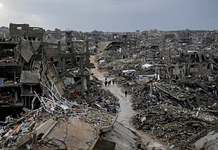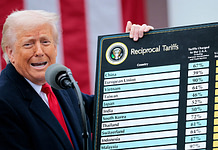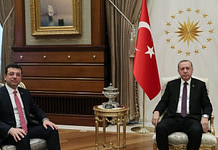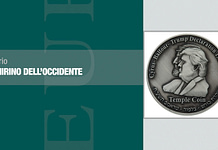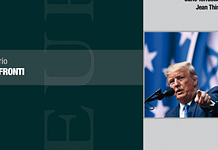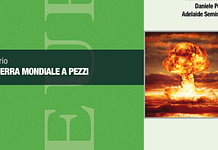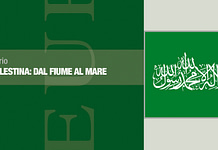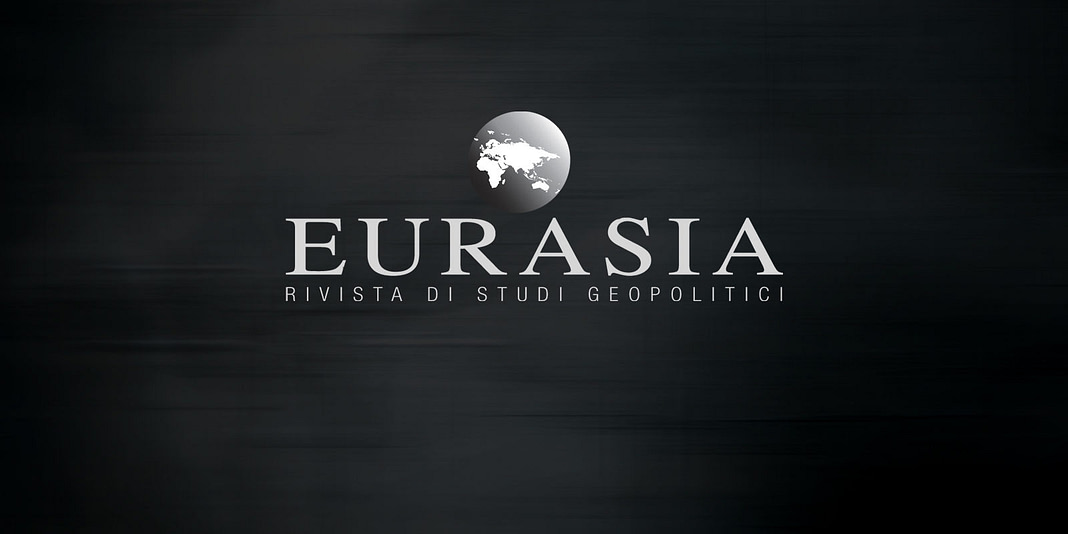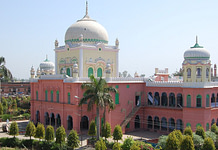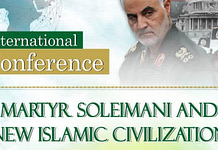Abstract
Connections between Maghreb and Europe are long period and multifaceted. Different elements can show this point: the Mediterranean Sea as a shared space where different cultural influences have met during centuries, the colonial domination, the European strategic and economic interests in North Africa, the attention European Union pays to this region.
In any case, to observe the relationships between Maghreb and European Union in the contemporary context, it is possible to identify other – less “official”, but not less important – links between the two shores of the Mediterranean Sea. In regard to this, emigration plays a very important role and the aim of this article is to provide a general overview of this phenomenon at the beginning of the current century.
Introduction
«The Mediterranean region is crucial for the EU»[1]. The following clarification – year 2008 – can be useful: «The area which is covered by the EU’s Euro-Mediterranean Partnership (Barcelona Process) and ENP comprises Algeria, Egypt, Israel, Jordan, Lebanon, Morocco, the Palestinian Authorities, Syria and Tunisia, with Libya as an observer. As such, what the EU classifies as the Mediterranean also includes many countries normally understood as located in the Middle East»[2].
An essential part of this region consists of Maghreb countries bordering on Mare Nostrum.
First of all, there is a close historical link between these states and the European continent, colonial power having been, for decades, a decisive element in the contemporary history of Maghreb geographic area. Today, Europe has in this region strategic and economic interests. For example, we can’t forget the hydrocarbon resources in the south of the Mediterranean Sea. About this point, we can mention an aspect of the relationship between an European country like Italy and some North African states: «Italy, the fourth largest world importer of natural gas, obtains 33% of its needs from Algerian and Libyan reserves (data ENI), and the presence of Italian companies in the sector is particularly strong. The energy ties with Algeria are of several decades: the first pipeline, Transmed, was built in the late seventies and early eighties, and is operated by ENI and Sonatrach, the Algerian state oil company»[3].
Beyond the natural resources-related issues[4], between Maghreb and European countries, there are important commercial relationships and, surely, the European Union had its initiatives concerning different aspects. In 1995, the Barcelona Process is launched, forming «the basis of the Euro-Mediterranean Partnership which has expanded and evolved into the Union for the Mediterranean»[5]. The three main dimensions of the partnership are: Political and Security Dialogue; Economical and Financial Partnership; Social, Cultural and Human Partnership. In the economic field we have the more concrete activity, with the aim of the «gradual establishment of a free-trade area»[6]. Clearly, the greater strength of European industry, as the limits concerning the imports of agricultural products in the European Union, have brought the major benefits to Europe. In 2004, the ENP[7] is introduced. «The European neighbourhood policy (ENP), which was officially established in 2004, aims at harmonising neighbourhood policies of member states, complementing national policies with an EU policy, and initiating a comprehensive strategy of good neighbourhood, notably towards Mediterranean and Eastern Europe»[8].
But there is an important human phenomenon linking north and south shores of the Mediterranean Sea. A phenomenon we should not forget in order to seriously consider the real “connections” between these two regions. The next few pages will be used to provide a general overview of emigration from Maghreb to EU at the beginning of the 21st century.
European Union, Maghreb and emigration
In the context of Barcelona Process and ENP, from 2005, is included «migration as a fourth key pillar of the Partnership»[9]. In any case, migration flows from third countries of the Mediterranean are not yet the subject of a real common European policy.
To have an idea of the importance of the presence in Europe of people from Maghreb, we can take a look at the following chart:
Presenza dei Maghrebini nei principali paesi europei (in migliaia, fine 1990)[10]
| Nazionalità | Belgio | Francia | Germania | Paesi Bassi | Italia | Spagna |
| Algerini | 10,7 | 619,9 | 7,4 | 0,6 | 4,0 | 1,1 |
| Marocchini | 141,7 | 584,7 | 69,6 | 156,9 | 78,0 | 28,2 |
| Tunisini | 6,4 | 207,5 | 26,1 | 2,6 | 41,2 | 0,4 |
«Fonte: Eurostat»
In reference with immigration to the EU, Maghreb has a double importance: it is an area of transit and a region of emigration itself, clearly with differences between its countries. We can think to Morocco, a state that, in view of its geographical position and of its history, appears like «trait-d’union, a point of balance between North and South influences»[11]. In the same way as other Mediterranean countries, Morocco is perceived by the EU as a zone of origin of migrants and, at the same time, as a transit area. So, the European Union tends to encourage the Mediterranean states to develop some policies on asylum and migration flows similar to the European ones[12].
Emigration from the North African area we are considering is not a recent phenomenon. Let’s observe the following chart, about the number of «Algériens» in France starting from the 1920s :
| Algé- riens* | Total Général** | |
| 1921 | 38 000 | 1 532 000 |
| 1926 | 72 000 | 2 505 000 |
| 1931 | 105 000 | 2 714 697 |
| 1936 | 87 000 | 2 198 236 |
| 1946 | 22 114 | 1 743 619 |
| 1954 | 211 675 | 1 765 298 |
| 1962 | 305 484 | 2 169 665 |
| 1968 | 471 020 | 2 664 060 |
| 1975 | 710 690 | 3 442 415 |
| 1982 | 795 920 | 3 680 100 |
* «Jusqu’à la Seconde Guerre mondiale, les chiffres indiquent le total des individus originaires d’Afrique (de 1926 à 1936, ce groupe constitue la cinquième communauté immigrée en France, mais elle n’est pas comptabilisée dans le total 1, compte tenu de son hétérogénéité juridique et ethnique). De 1946 à 1962, il s’agit des musulmans d’origine algérienne, mais juridiquement français».Source: Noiriel, Population, immigration et identité nationale en France XIX-XX siècle, Hachette, Paris 1992, cit., p. 70.
** The «Total général» concerns all the inhabitants who do not have the French nationality but living in the Hexagone (France).
*** This is only a part of a larger chart about different nationalities in France [L’évolution des principales nationalités présentes en France entre 1921 et 1982(d’après les recensements de la SGF et de l’INSEE)].
It is important to consider that migration from Maghreb to Europe has one of the main roots in the colonial past. A. Sayad ties the Algerian emigration to France to the colonial system, considering that, before the independence, emigration was run by Paris on the basis of the French labor market needs[13]. Clearly, the dependency link created during the previous decades, from a cultural and economic point of view, cannot disappear in a short time and continue to translate also into emigration flux towards the old colonizing country.
B. Hamdouch and M. Khachani explain that, starting from 1960s, emigration from Maghreb to Europe takes the form of a real mass phenomenon, with an important evolution and different dynamics between the Maghreb countries[14]. According to the two authors and to the first chart they propose, the choice to leave Maghreb for going to Europe expresses economic disparities between the two shores of the Mediterranean.
Revenu par habitant des principaux pays d’accueil de migrants en 2000
(en milliers de dollars)[15]
| Grande-Bretagne | Pays-Bas | Allemagne | Belgique | France | Italie | Espagne | Algérie | Maroc | Moyenne Mondiale |
| 23,80 | 23,00 | 22,60 | 22,10 | 21,80 | 18,60 | 14,50 | 1,59 | 1,18 | 5,20 |
«Source : Rapport de la Banque Mondiale, 2002»
At the beginning of the Millennium, the GDP (gross domestic product) per capita of countries like Morocco and Algeria is clearly lower than the average of important European immigration countries[16]. For example, in Morocco, the northern provinces constitute an important area of emigration because of a precarious economic position.
In spite of a certain economic instability[17] (and of a consequent labour market instability), Maghreb region continue to have a strong demography. This means a greater job offer than the needs of the national markets. The result is a high rate of unemployment that affect mainly young people[18].
Beyond the lack of economic development a country is normally affected by after years of colonial rule, most recently, the Maghreb economies have known the effects of difficult periods like the crisis of the end of 1970s and the economic consequences of the Gulf crisis. Moreover, the progressive liberalization of trade has brought more difficulties to the local firms and has contributed to the loss of jobs.
In Maghreb, emigration is linked to a significant rate of poverty. To have an example, we can look at the following table concerning Morocco:
Proportion des Marocains vivant en dessous du seuil de pauvreté[19]
| 1984-85 | 1990-91 | 1998-99 | |
| Urbain | 13,8 | 7,6 | 12,0 |
| Rural | 26,7 | 18,0 | 27,2 |
| Total de la population | 21,1 | 13,1 | 19,0 |
«Source : Direction de la statistique»
70% of Moroccan emigrants result to go away for economic reasons[20]. They decide to leave for finding a better-paid job or, simply, to look for an occupation and to improve their standard of living. In this situation, the contribution of remittances – money sent home by migrants – becomes very important.
In the relations between Europe and Maghreb, the geographic element has its importance. The nearness between the two regions explains a part of the European reasons to be interested in including Maghreb in an effective neighbourhood policy, especially to promote free market and political stability.
Spatial proximity plays a role also in migratory dynamics. It is normal that people who decide to go away are attracted by a close, richer region. The distance between Europe and Morocco coasts is about 14 kilometres[21]. Lots of young persons take the risks of crossing the Strait of Gibraltar by dangerous boats and the rate of victims is high[22]. Moreover, in such a context, structured organizational networks – to which people leaving pay very high sums – give a strong impulse to illegal emigration.
As we said before, immigration from third countries of the Mediterranean is not yet the subject of a real common European policy. There are some bilateral agreements: «As part of the Euro-Mediterranean partnership process, a new generation of bilateral agreements have been set up between the European Community and its Member States, of the one part, and the Mediterranean partnership countries of the other. These replace the first generation of agreements, i.e. the cooperation agreements of the 1970s»[23]. Between 1998 and 2005, the European Union concluded seven Euro-Mediterranean Association Agreements. Between them, there is an agreement with the People’s Democratic Republic of Algeria, one with the Kingdom of Morocco and one with the Republic of Tunisia[24]. If we look at the agreements with Algeria and Morocco, a system of non-discrimination (about the conditions of work, remuneration, dismissal) is foreseen for people from these countries living in European states. Non-discrimination has to be reciprocal[25] and it is also referred to the welfare systems. For example, workers from Algeria or Morocco and the members of their family, living in an European member state, shall enjoy, in social security, a treatment free from any nationality-based discrimination[26]. Moreover, workers from Algeria and Morocco living in European member states benefit of free transfer to their origin country, of retirement or disability pension. In general terms, the agreements mention dialogue about migration and illegal immigration; dialogue and cooperation to improve living conditions and to create job and professional training opportunities in the areas from which emigrants come.
Anyway, we can observe that Barcelona Process and Association Agreements remain on a general level concerning emigration from south to north of the Mediterranean.
The migration phenomenon would need more attention and a serious political approach, in order to give people arriving to European Union concrete professional and integration opportunities and not to leave them in the circuits of irregular emigration. Concerning the Euro-Mediterranean Partnership, in our opinion, it should be a starting point to stimulate economic development in non-EU Mediterranean countries, giving people a real chance to choose where to live and work (in their region or abroad).
References
N. Berger, La politique européenne d’asile et d’immigration. Enjeux et perspectives, Bruylant, Bruxelles, 2000.
Hassan Bousetta, Sonia Gsir et Marco Martiniello, Les migrations marocaines vers la Belgique et l’Union européenne. Regards croisés, Actes de la journée d’étude organisée dans le cadre du Pôle d’Attraction Interuniversitaire (PAI) par le CEDEM le 17 février 2004, Hummanitariannet-CEDEM-IMISCOE, Publications de l’Université de Deusto, Bilbao 2005 ;
Abdellatif Fadloullah, Colonizzazione ed emigrazione in Maghreb, in R. Cagiano de Azevedo, “Migration et cooperation au développement, etudes démographiques n° 28”, Direction des affaires sociales et économiques, edizioni del Consiglio d’Europa, 1994, http://www.cestim.it/argomenti/11devianza/carcere/due-palazzi/studi_explorer_%201%20-%204/pagine%20web/colonizzazione_ed_emigrazione_in.htm ;
B. Hamdouch, M. Khachani, Les determinants de l’émigration internationale au Maghreb, dans Les migrations internationales. Observations, analyse et perspectives, Colloque international de Budapest (Hongrie, 20-24 septembre 2004), Numéro 12, Association internationale des démographes de langue française, AIDELF.
Larbi Jaidi, Statut avancé entre l’UE et le Maroc: un nouveau mode de partenariat ?, in Afkar/idées. Revue trimestrielle pour le dialogue entre le Maghreb, l’Espagne et l’Europe, Internet page of the article: http://www.iemed.org/afkar/14/10Jaidi.pdf ;
Stephan Keukeleire and Jennifer MacNaughtan, The foreign policy of the European Union, Palgrave and McMillan, 2008;
Andrew Mold (ed.), EU Development Policy in a Changing World. Challenges for the 21st Century, Amsterdam University Press, 2007;
Gérard Noiriel, Population, immigration et identité nationale en France IX-XX siècle, Hachette, Paris 1992;
Reimund Seidelmann, The EU’s neighbourhood policies, in Mario Telo (edited by) The European Union and Global Governance, Rotledge, 2009;
P.-J Thumerelle, A propos de l’immigration algérienne en France, in «Espace, population, société», II, 1983 ;
Euro-Mediterranean Agreement establishing an association between the European Communities and their Member States, of the one part, and the Kingdom of Morocco, of the other part (2000);
Euro-Mediterranean Agreement establishing an association between the European Communities and their Member States, of the one part, and the People’s Democratic Republic of Algeria, of the other part (entered into force in 2005);
Maghreb. Altra sponda dell’Europa, ICEI Istituto Cooperazione Economica Internazionale, ong del Cocis, I fascicoli dell’Icei n. 2 – Gennaio 2002;
Maghreb: i rapporti economici con l’Italia, dans Equilibri.net, 25/01/2010.
[1] Andrew Mold (ed.), EU Development Policy in a Changing World. Challenges for the 21st Century, Amsterdam University Press, 2007, cit., p. 87.
[2] Stephan Keukeleire and Jennifer MacNaughtan, The foreign policy of the European Union, Palgrave and McMillan, 2008, cit., p. 274.
[3] Maghreb: i rapporti economici con l’Italia, in Equilibri.net, 25/01/2010. Original language version of the quoted passage: «L’Italia, quarto importatore mondiale di gas naturale, ricava il 33% del suo fabbisogno dalle riserve algerine e libiche (dati ENI), e la presenza di aziende italiane operanti nel settore è particolarmente forte. I legami energetici con l’Algeria sono pluridecennali: il primo gasdotto, il Transmed, fu costruito tra la fine degli anni Settanta e l’inizio degli anni Ottanta, ed è gestito dall’ENI e dalla Sonatrach, la compagnia petrolifera statale algerina».
[4] About Maghreb natural resources, it is important to consider «che le terre del Maghreb vantano risorse minerarie significative che rappresentano per l’Algeria il 23,7% del prodotto interno lordo (PIL), l’11% per la Tunisia, e il 5% per il Marocco» (Maghreb. Altra sponda dell’Europa, ICEI Istituto Cooperazione Economica Internazionale, ong del Cocis, I fascicoli dell’Icei n. 2 – Gennaio 2002, cit., p. 15).
[5] European Union External Action, http://eeas.europa.eu/euromed/barcelona_en.htm .
[6] Ibidem.
[7] «With the introduction of the European Neighbourhood Policy (ENP) in 2004, the Barcelona Process essentially became the multilateral forum of dialogue and cooperation between the EU and its Mediterranean partners while complementary bilateral relations are managed mainly under the ENP and through Association Agreements signed with each partner country» (Ibidem).
[8] Reimund Seidelmann, The EU’s neighbourhood policies, in Mario Telo (edited by) The European Union and Global Governance, Rotledge, 2009, cit., p. 261.
[9] Ibidem. In any case, if we read the document of the First Euro-Mediterranean Ministerial Meeting on Migration, (Algarve – 18, 19 November 2007), http://www.eu2007.pt/NR/rdonlyres/8D86D66E-B37A-457E-9E4A-2D7AFF2643D9/0/20071119AGREEDCONCLUSIONSEuromed.pdf , we don’t find very forceful decisions.
[10] Abdellatif Fadloullah, Colonizzazione ed emigrazione in Maghreb, in R. Cagiano de Azevedo, “Migration et cooperation au développement, etudes démographiques n° 28”, Direction des affaires sociales et économiques, edizioni del Consiglio d’Europa, 1994, http://www.cestim.it/argomenti/11devianza/carcere/due-palazzi/studi_explorer_%201%20-%204/pagine%20web/colonizzazione_ed_emigrazione_in.htm
[11] Larbi Jaidi, Statut avancé entre l’UE et le Maroc : un noeveau mode de partenariat ?, in Afkar/idées. Revue trimestrielle pour le dialogue entre le Maghreb, l’Espagne et l’Europe, cit., p. 22. Internet page of the article: http://www.iemed.org/afkar/14/10Jaidi.pdf .
[12] You can refer to Hassan Bousetta, Sonia Gsir et Marco Martiniello, Les migrations marocaines vers la Belgique et l’Union européenne. Regards croisés, Actes de la journée d’étude organisée dans le cadre du Pôle d’Attraction Interuniversitaire (PAI) par le CEDEM le 17 février 2004, Hummanitariannet-CEDEM-IMISCOE, Publications de l’Université de Deusto, Bilbao 2005, p. 106. You can find the mentioned work on line.
[13] Cfr. P.-J Thumerelle, A propos de l’immigration algérienne en France, in «Espace, population, société», II, 1983.
[14] Compare with B. Hamdouch, M. Khachani, Les determinants de l’émigration internationale au Maghreb, dans Les migrations internationales. Observations, analyse et perspectives, Colloque international de Budapest (Hongrie, 20-24 septembre 2004), Numéro 12, Association internationale des démographes de langue française, AIDELF.
[15] Our source: ibidem, p. 210
[16] Clearly, in each country there are differences between the various social categories and regions.
[17] Hamdouch and Khachani observe: «C’est le secteur primaire qui conditionne le rythme de la croissance économique, les hydrocarbure en Algérie et l’agriculture en Tunisie et au Maroc. Les fluctuations du prix du pétrole sur le marché mondial, d’une part, et la récurrence des années de sécheresse durant les deux dernières décennies, d’autre part, ont eu un impact négatif sur le rythme de croissance» (B. Hamdouch, M. Khachani, Les determinants de l’émigration internationale au Maghreb, cit., p. 210).
[18] Hamdouch and Khachani relate the following data: «Dans le trois pays du Maghreb, la proportion de la population en chômage augmente. En une décennie, de 1990 à 2000, les taux sont passés de 19,8% à 29,9% en Algérie, de 12,1% à 13,7% au Maroc et de 16,2% à 15,9% en Tunisie. L’État, traditionnellement créateur d’emploi, a réduit énormément sa contribution au marché du travail, et cette réduction a engendré un recul des investissements publics et, par consequent, de l’emploi» (ibidem, p. 210).
[19] Ibidem, p. 212. Then, 12% leave for family reasons (to reach family members abroad), 9% for studying, 6% for “social” reasons (for example the tendency to imitate and reach friends abroad or dissatisfaction for situation in Morocco) [compare with ibidem, pp. 216-217].
[20] Compare with ibidem, p. 216.
[21] Compare with ibidem, p. 213.
[22] Compare with ibidem.
[23] Euro-Mediterranean Association Agreements, in Europa (website), http://europa.eu/legislation_summaries/external_relations/relations_with_third_countries/mediterranean_partner_countries/r14104_en.htm N. Berger explain as, in 1976, the European Community concluded two cooperation agreements with Algeria and Morocco. The general objective was to promote a global cooperation in order to contribute to economic and social development of the two Maghreb countries. Concretely, cooperation is provided in three sectors: economic, financial and technical sector; commercial exchanges; workers. About workers of the concerned countries, the agreements speak about a regime «caractérisé par l’absence de toute discrimination fondée sur la nationalité en ce qui concerne les conditions de travail et de rémunération» (N. Berger, La politique européenne d’asile et d’immigration. Enjeux et perspectives, Bruylant, Bruxelles, 2000, cit., p. 78). Moreover, there is a “clause d’égalité de traitement” concerning social security.
[24] You can consult the whole documents on the website Cooperazione internazionale. Sostegno alla cooperazione della Pubblica Amministrazione, section documents, http://cooperazione.formez.it/sections/documenti
[25] Non-discrimination is valid for European workers in Maghreb countries, too.
[26] Non-discrimination in relation with the nationals of the European member state where workers from Algeria or Morocco are employed.
Questo articolo è coperto da ©Copyright, per cui ne è vietata la riproduzione parziale o integrale. Per maggiori informazioni sull'informativa in relazione al diritto d'autore del sito visita Questa pagina.


